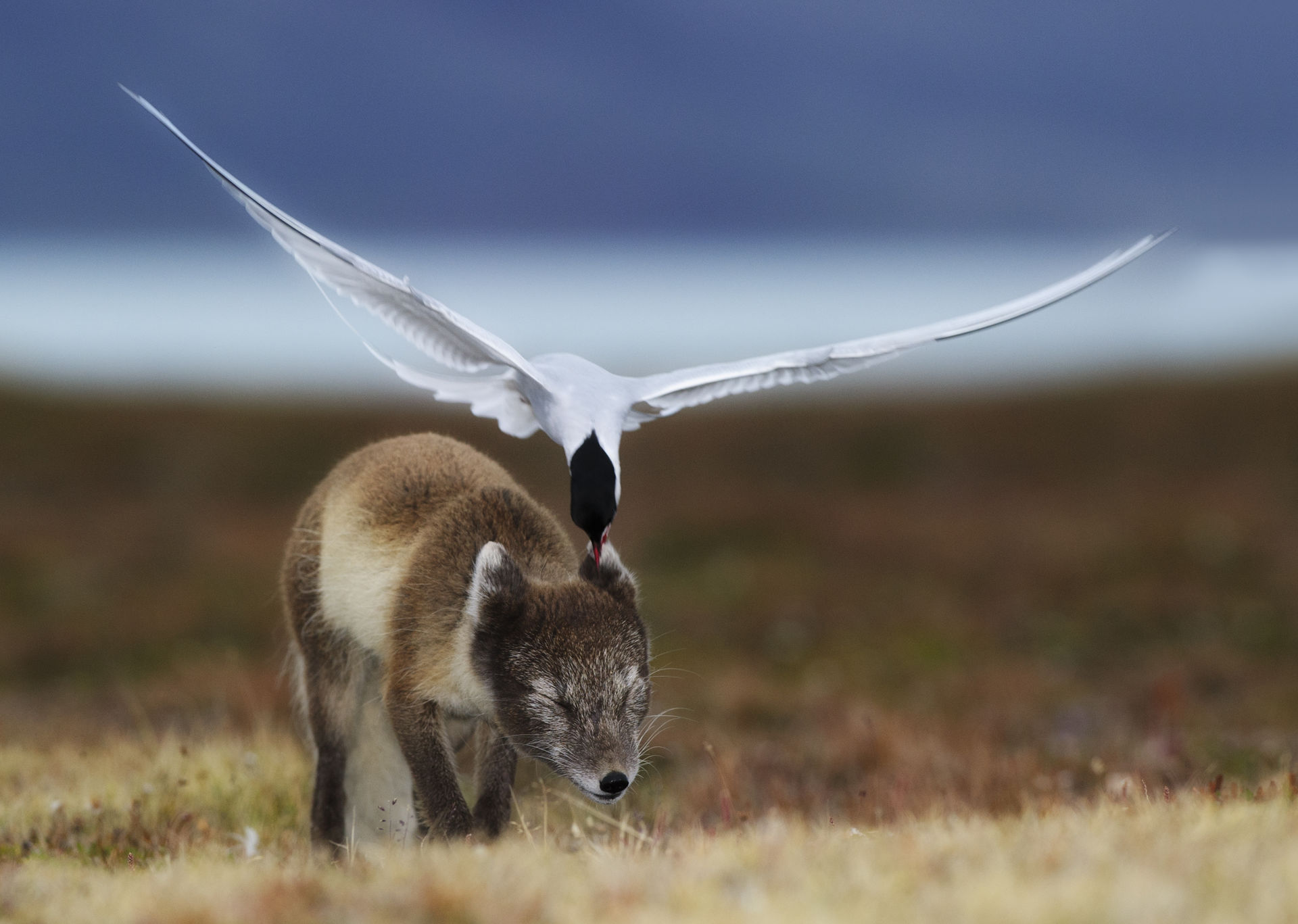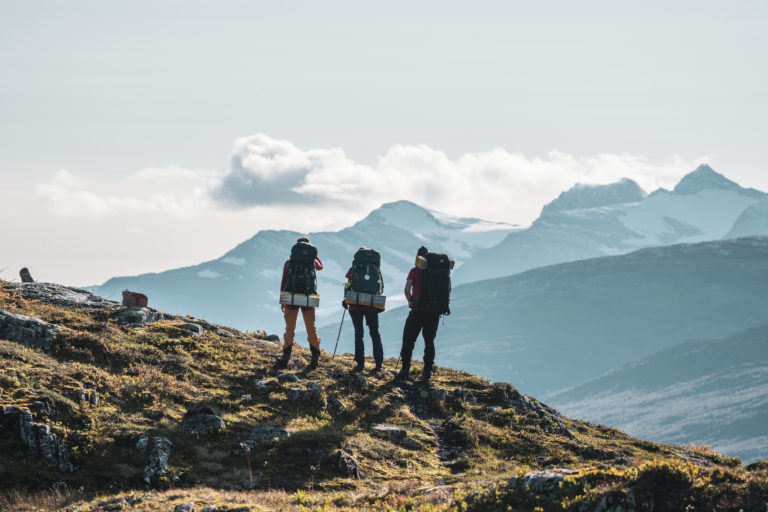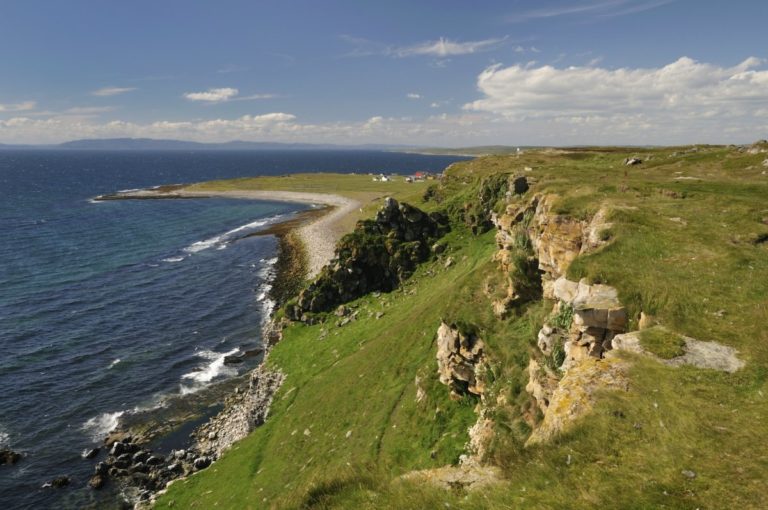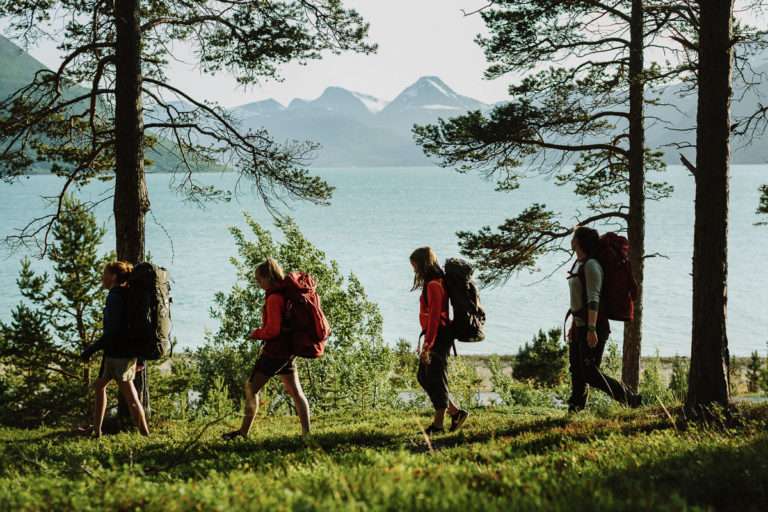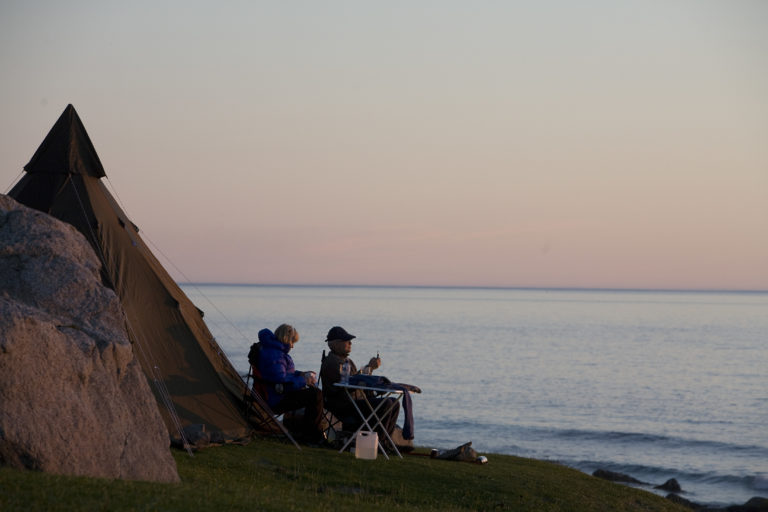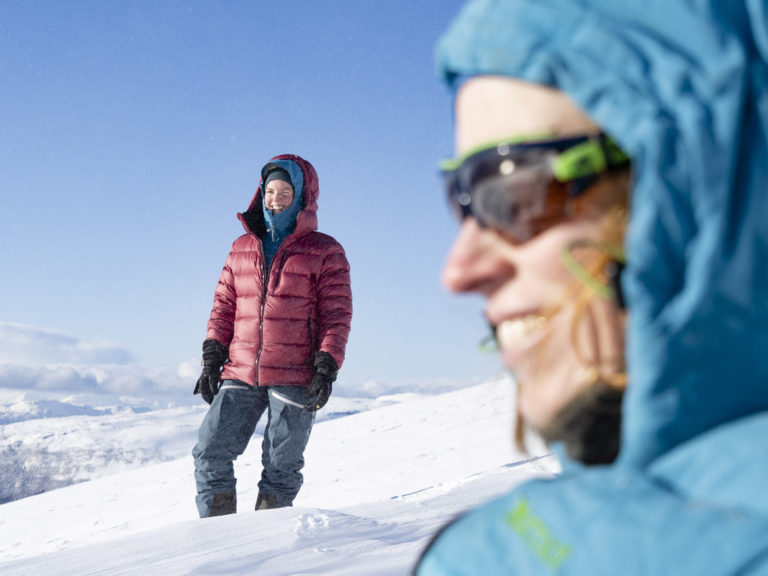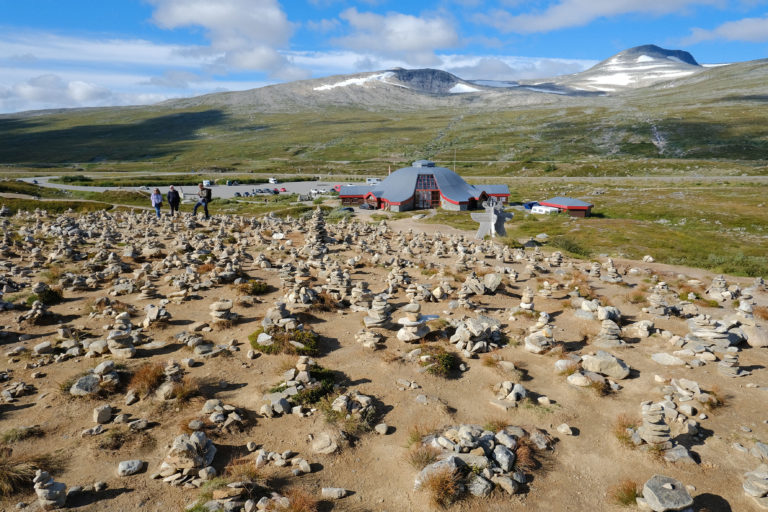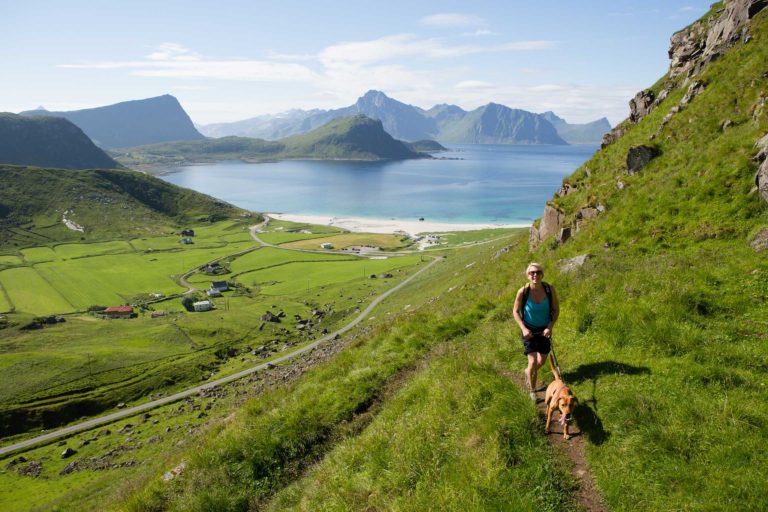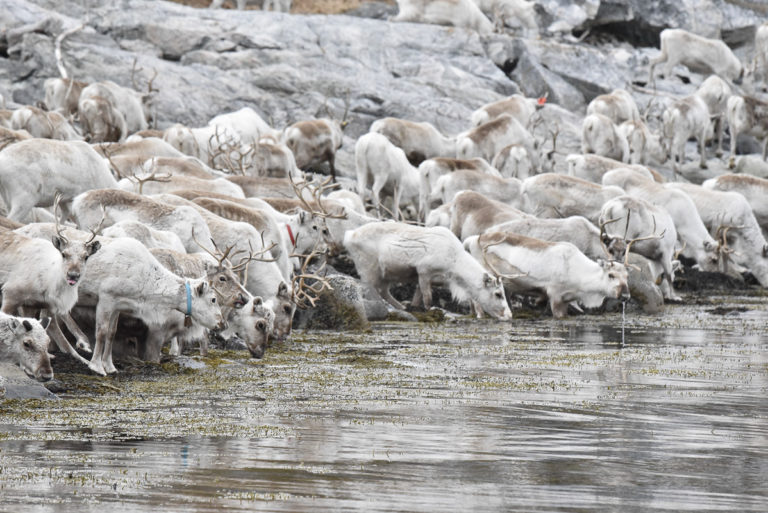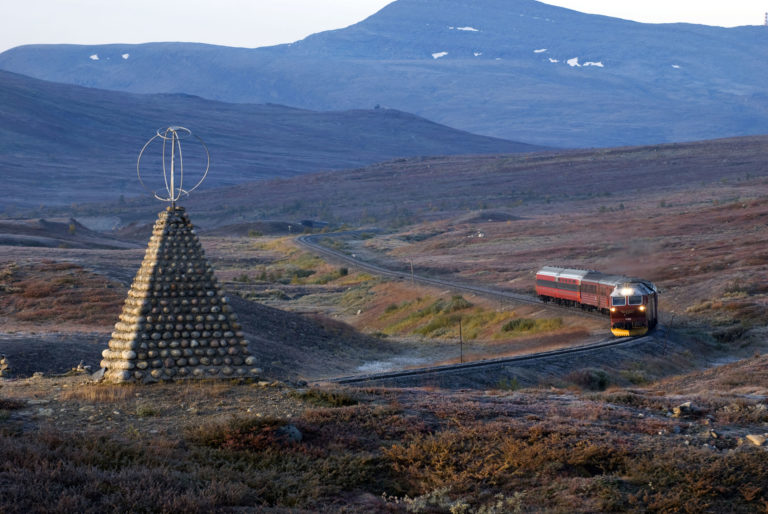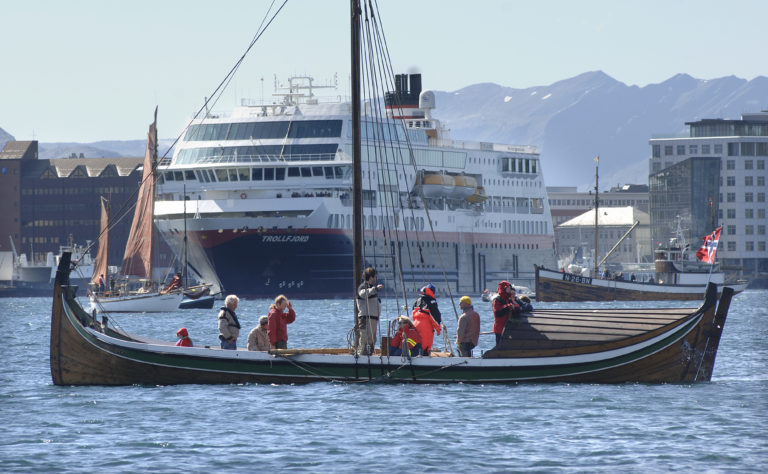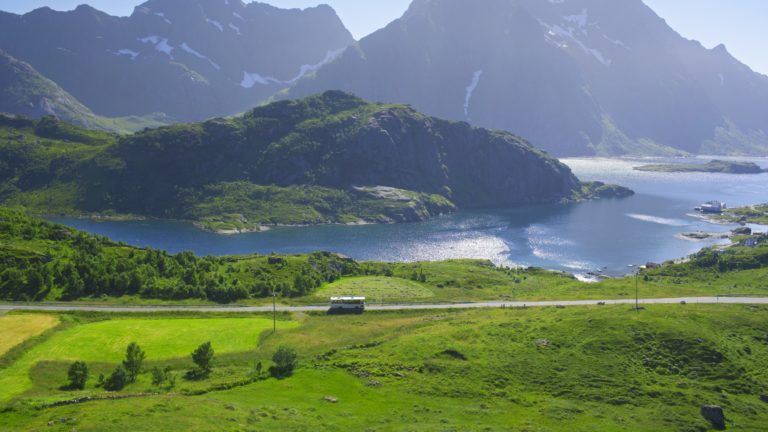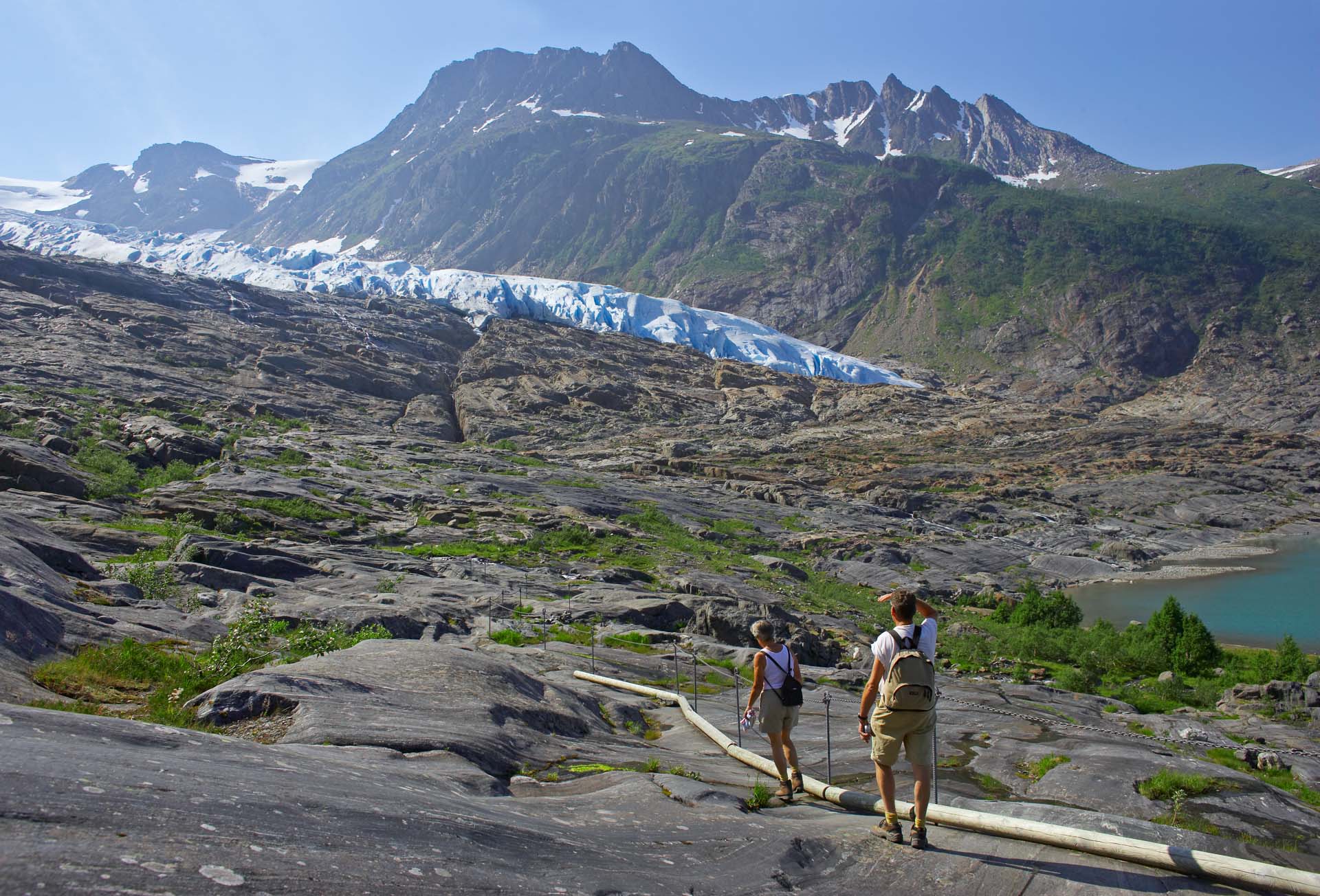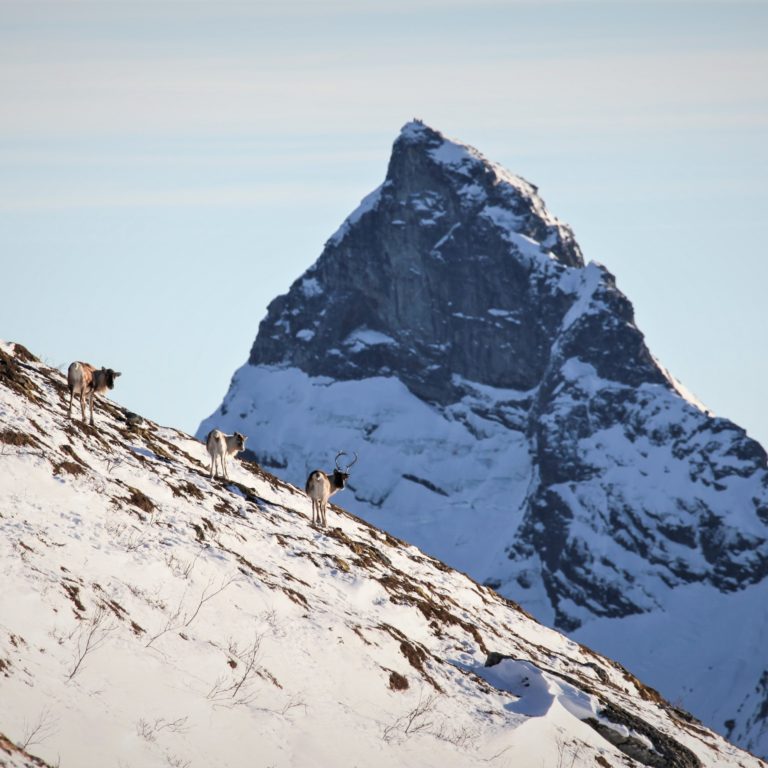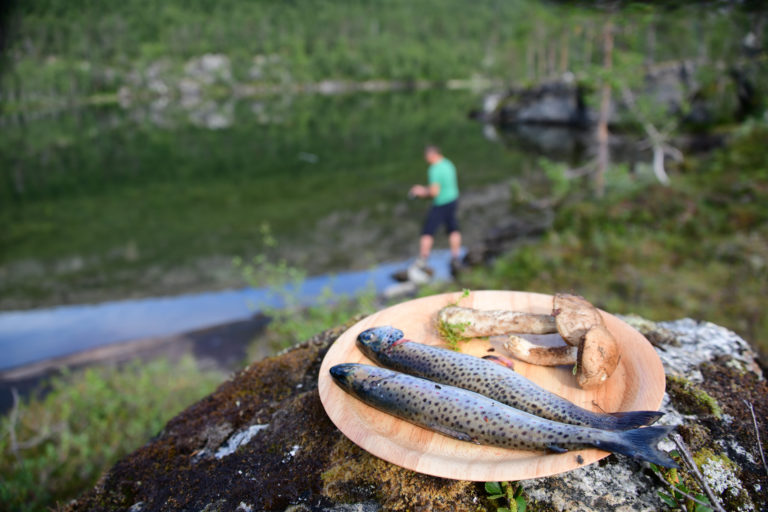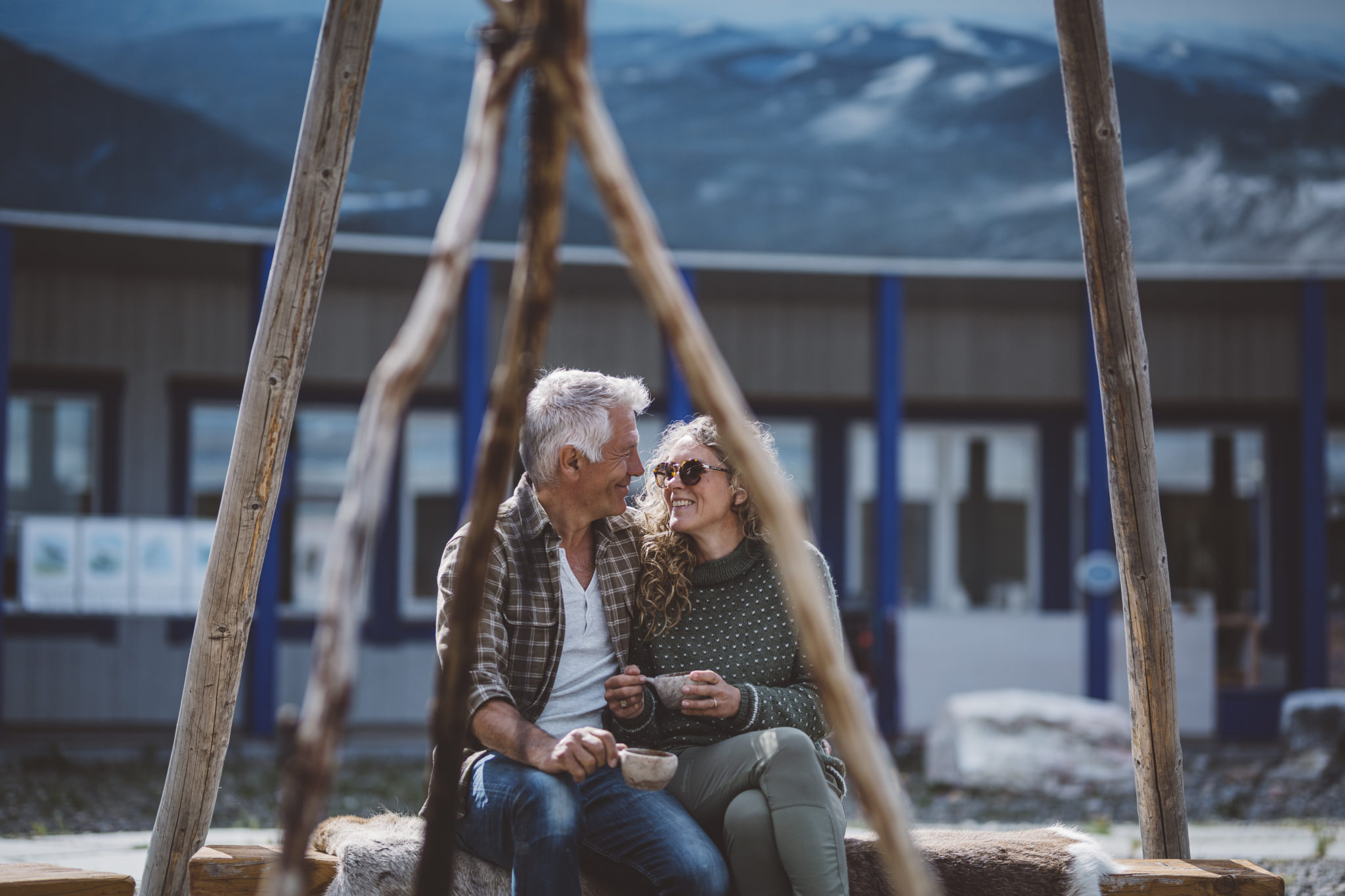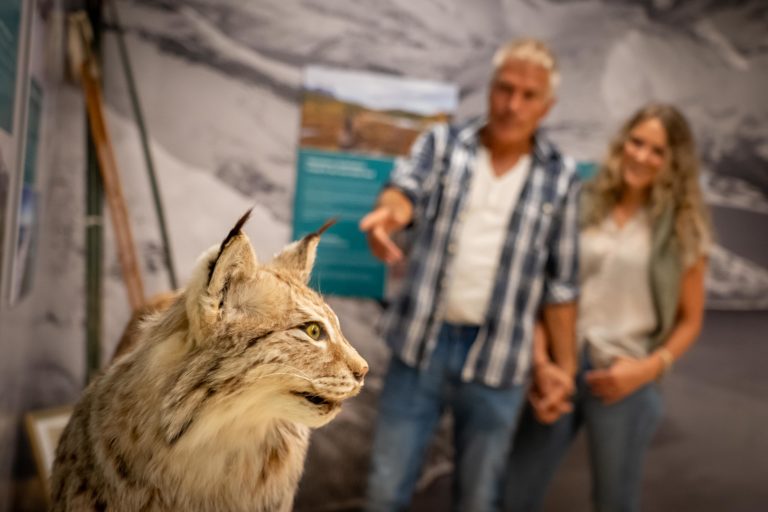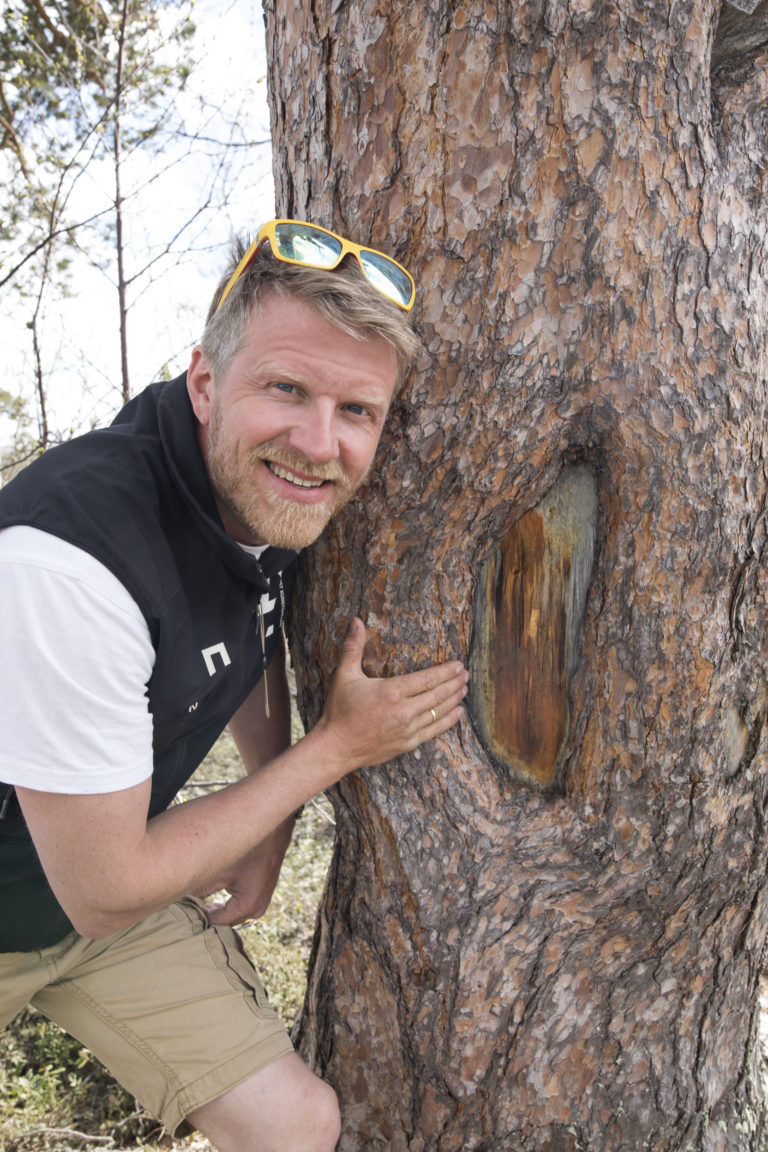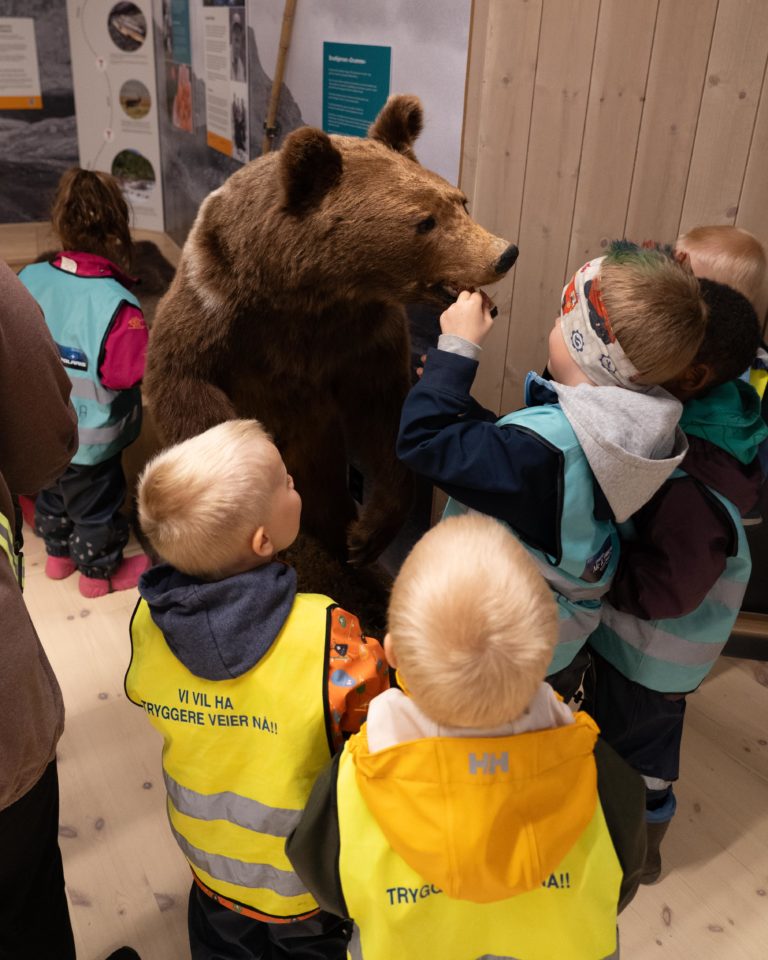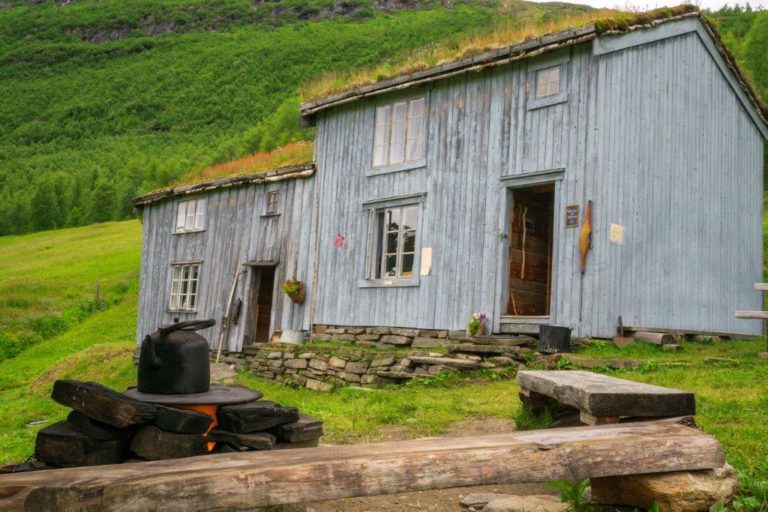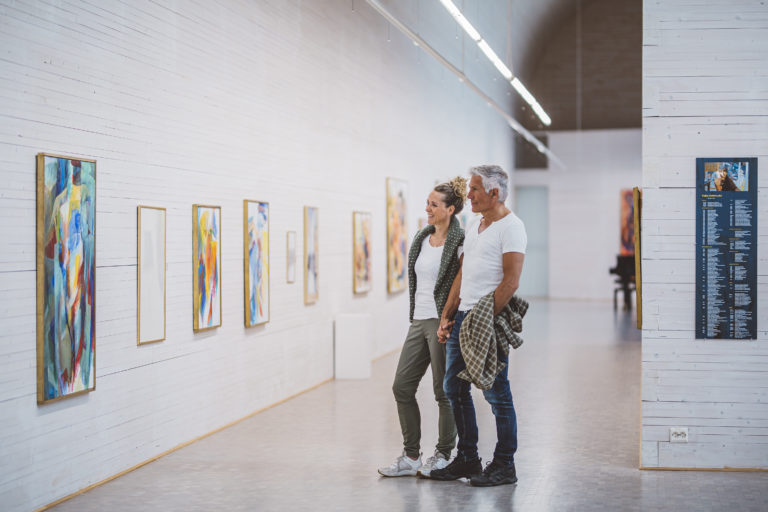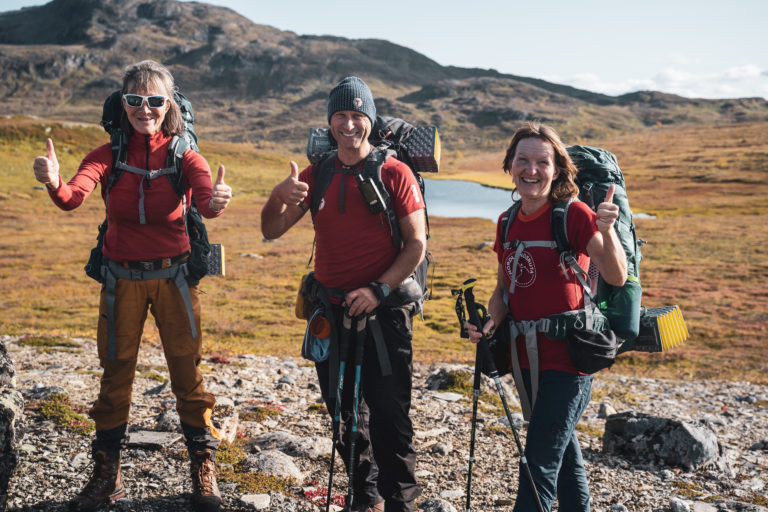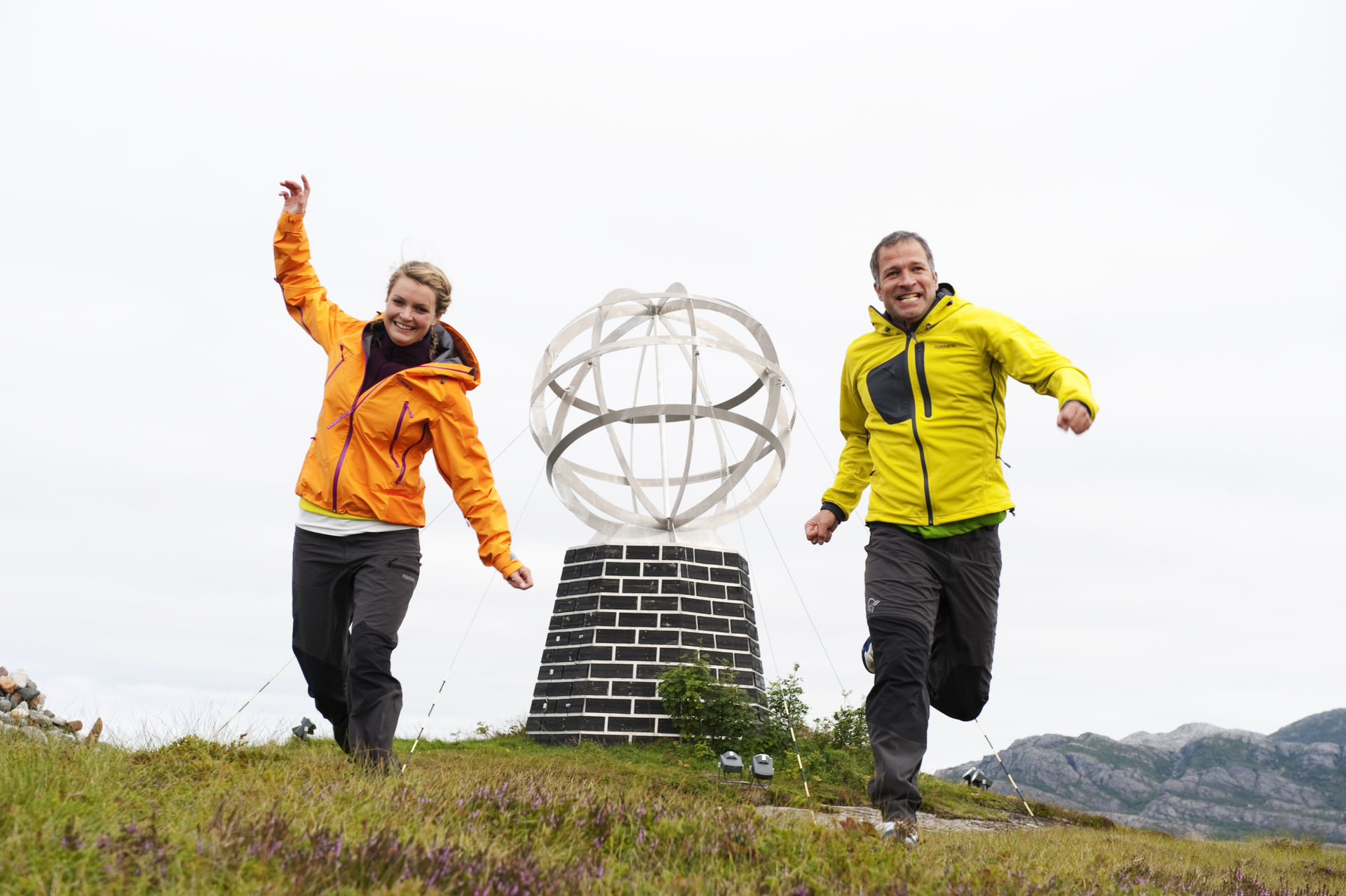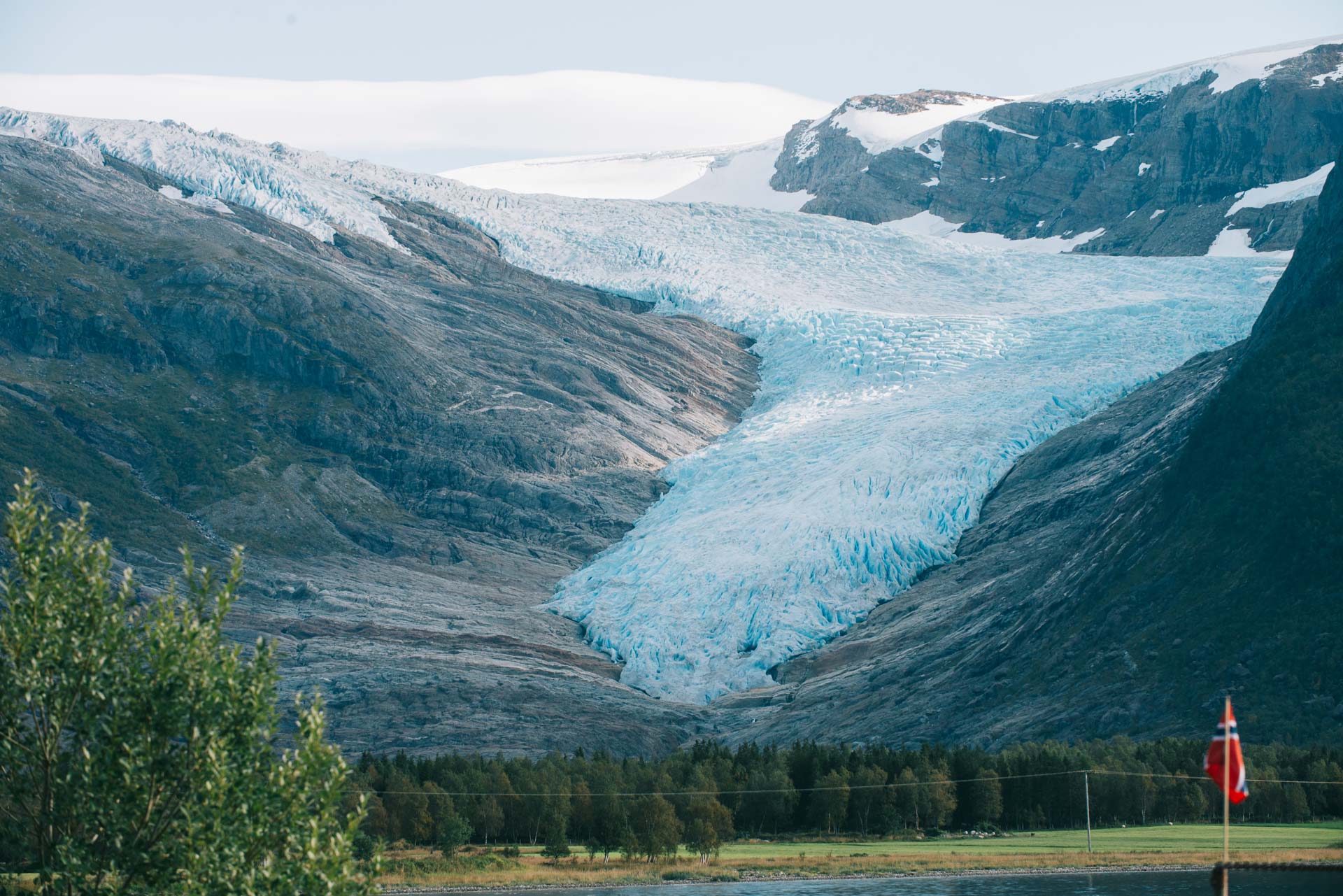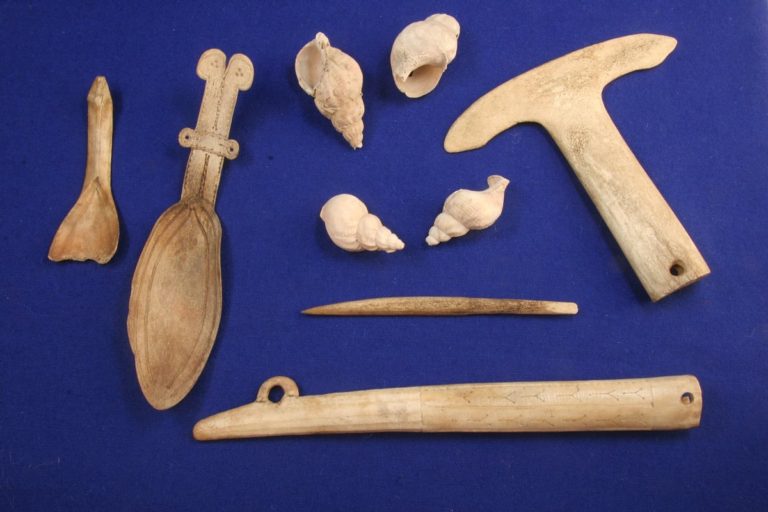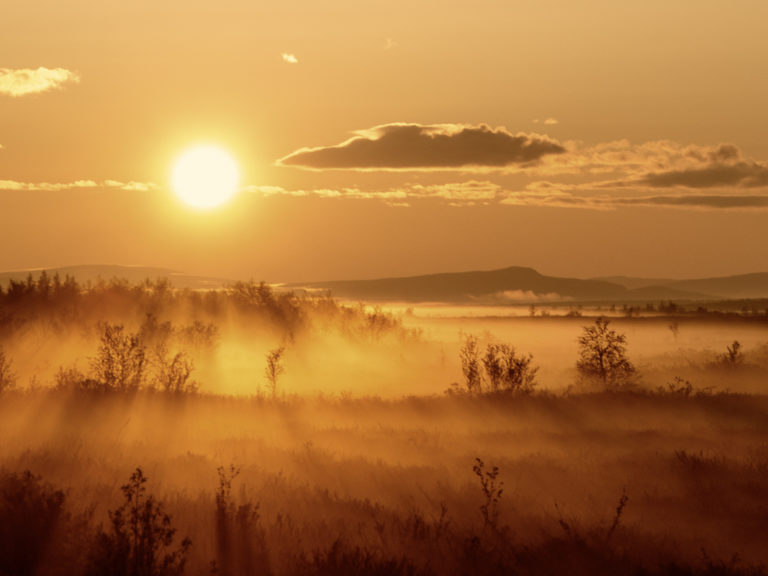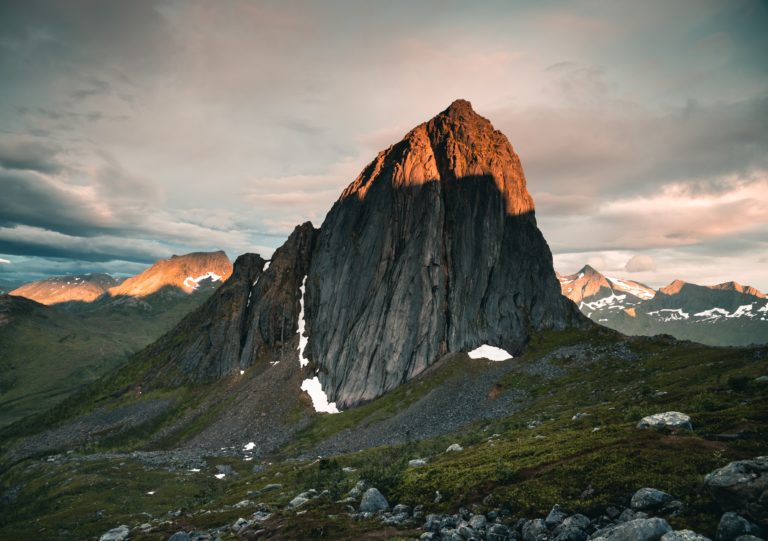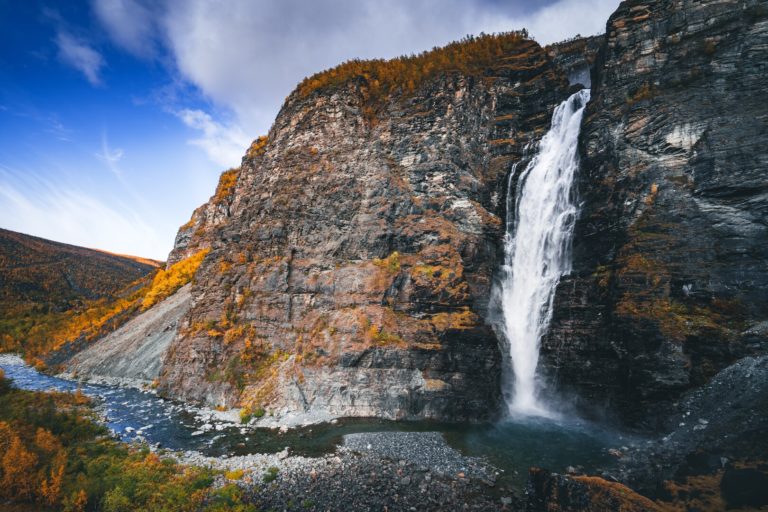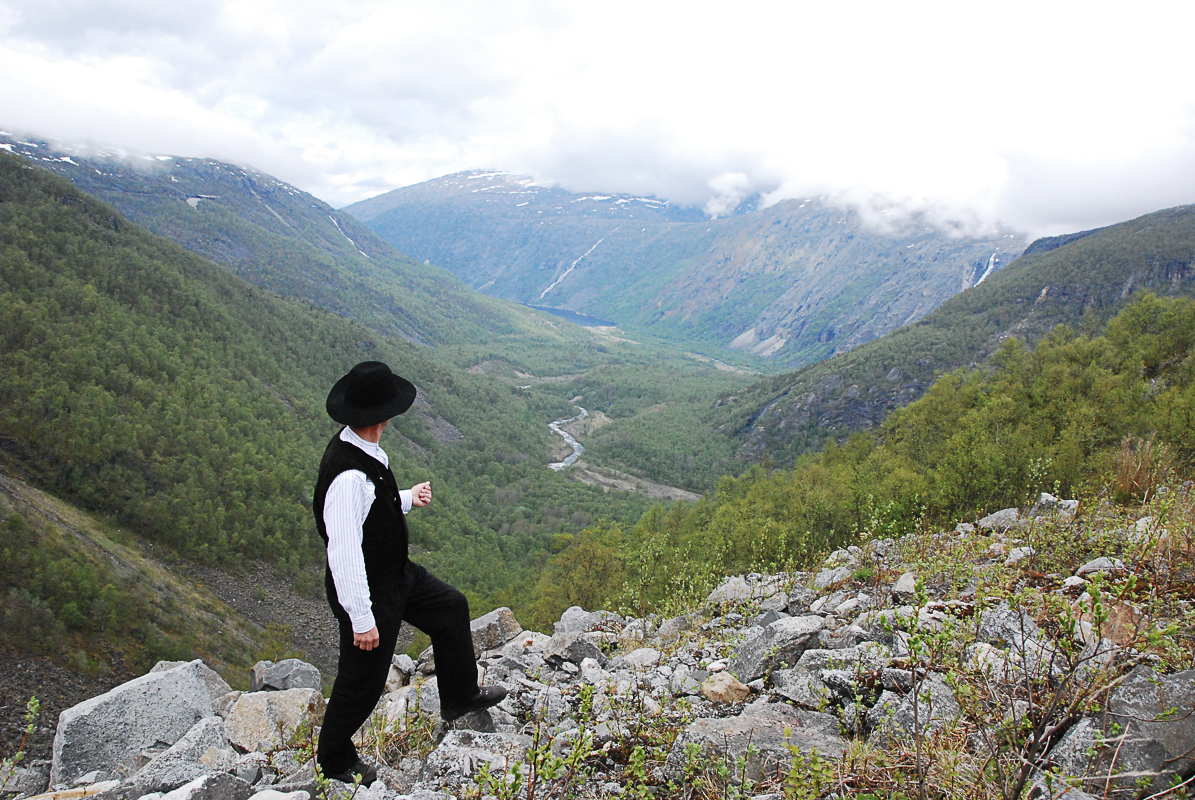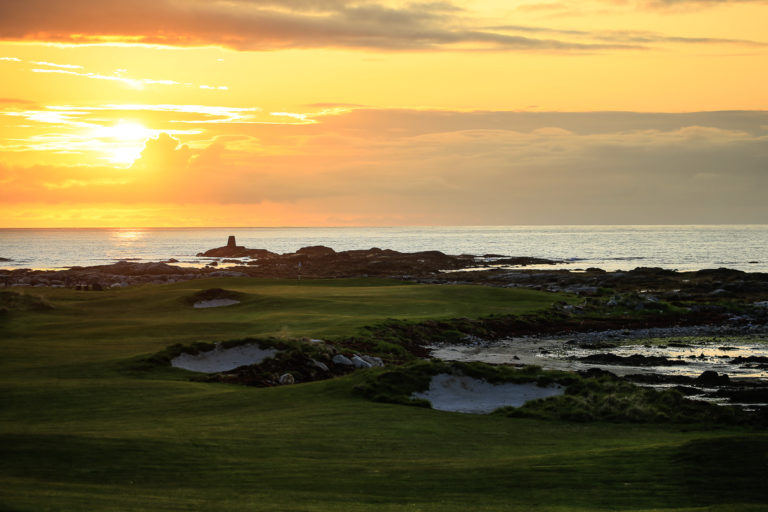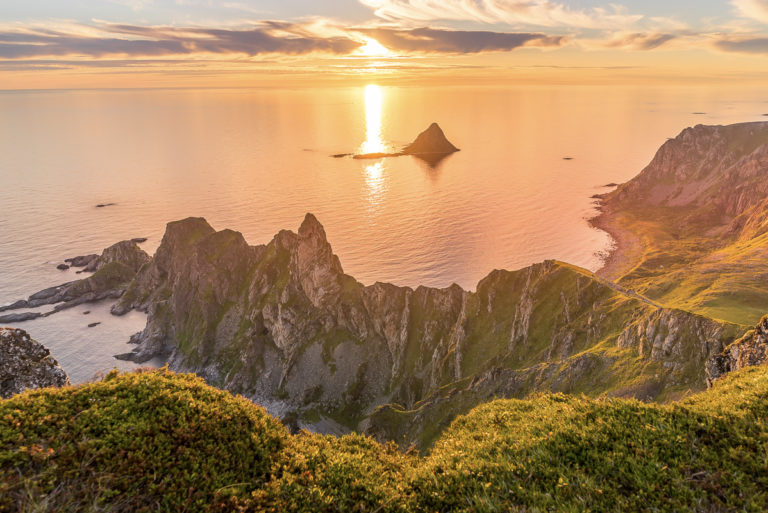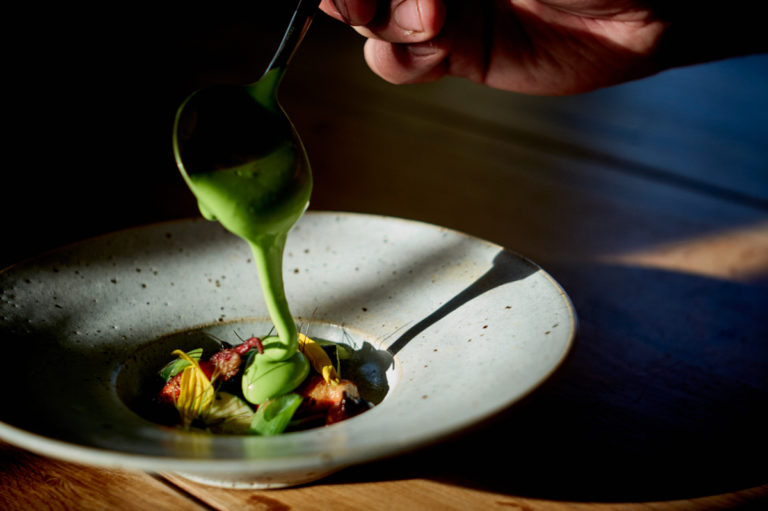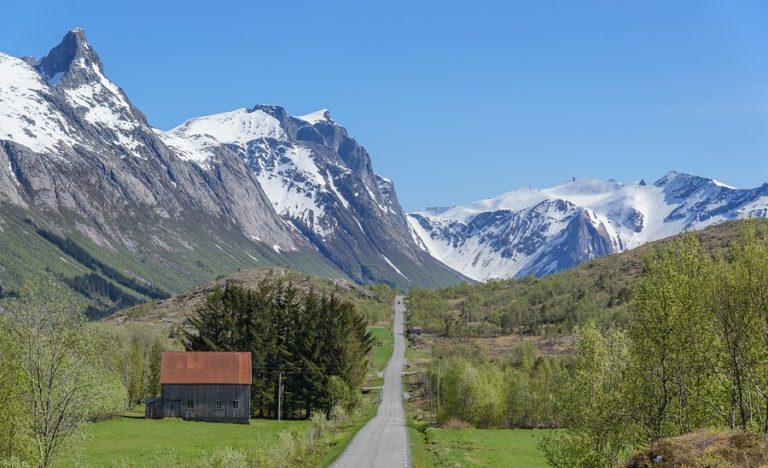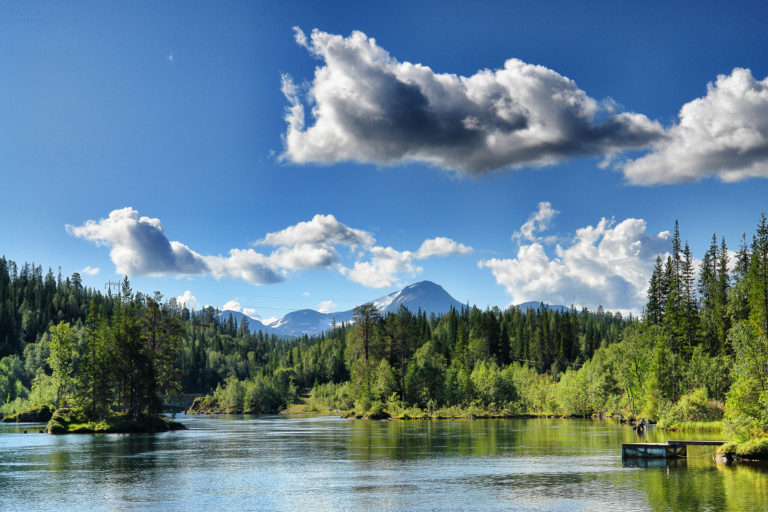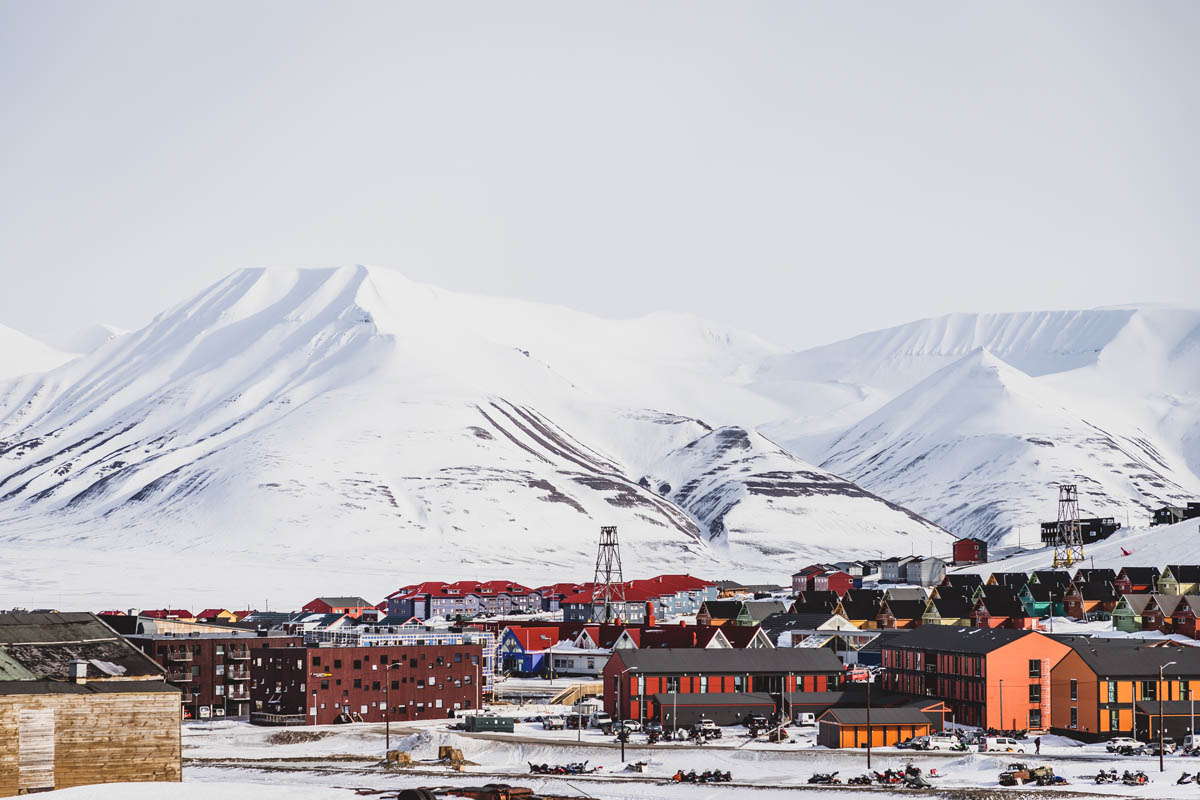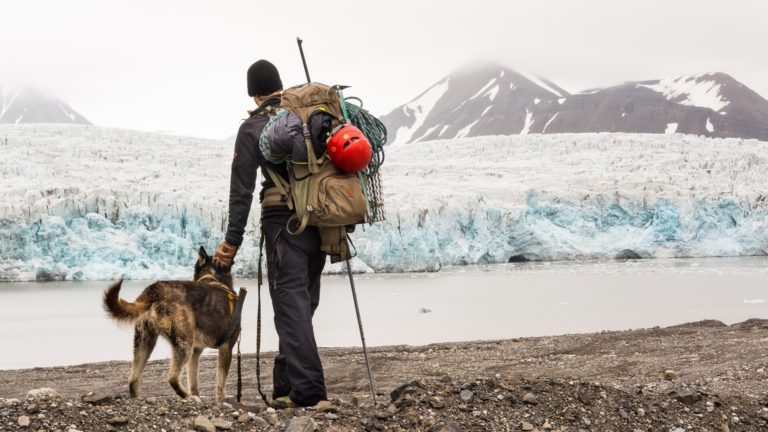Lars Monsen is into the wild again! Now he is hunting for spectacular nature experiences and useful knowledge about the unique nature we have chosen to protect for the future. Lars will visit all of the country’s national parks, and in the first season he will visit six of the 48 national parks in Norway. He starts the first season with two in Finnmark, and ends with one in Nordland and one in Svalbard. In this article you can also get to know our 6 national park centers and 25 national parks (18 in Northern Norway and 7 in Svalbard). These are real treasure troves of nature and experiences.
Lars Monsen is half Northerner, with Sami ancestry and has spent much of his childhood and youth with a fishing rod and mountain boots in the fishing lakes and plateaus of Saltfjellet. Later, he has trawled most of the country length and breadth, in search of the dream fish and outdoor adventures. Something that has gradually made him an outdoor icon for all of Norway, and brought him to both across Canada and Alaska. It is precisely this experience and knowledge of how nature in Norway has developed from the early 1980s to the present day that we hear a lot about in this new series. And it is not just cheerful news about the development of biological diversity in our national parks.
In the first season he takes you to:
- Øvre Pasvik National Park (episode 1)
- Varangerhalvøya National Park (episode 2)
- Børgefjell National Park (episode 5)
- Svalbard’s 7 National Parks (episode 6)
Read more about and watch the first season of https://tv.nrk.no/serie/monsen-og-nasjonalparkene.
Get to know and learn more about https://www.norgesnasjonalparker.no/.
Presentation of the parks in the north continues under the gray box.
How to behave more responsibly as a visitor?
The national parks in Northern Norway are not only treasure troves for outdoor activities, but primarily for landscapes, cultural heritage, Sami reindeer herding practices and biodiversity.
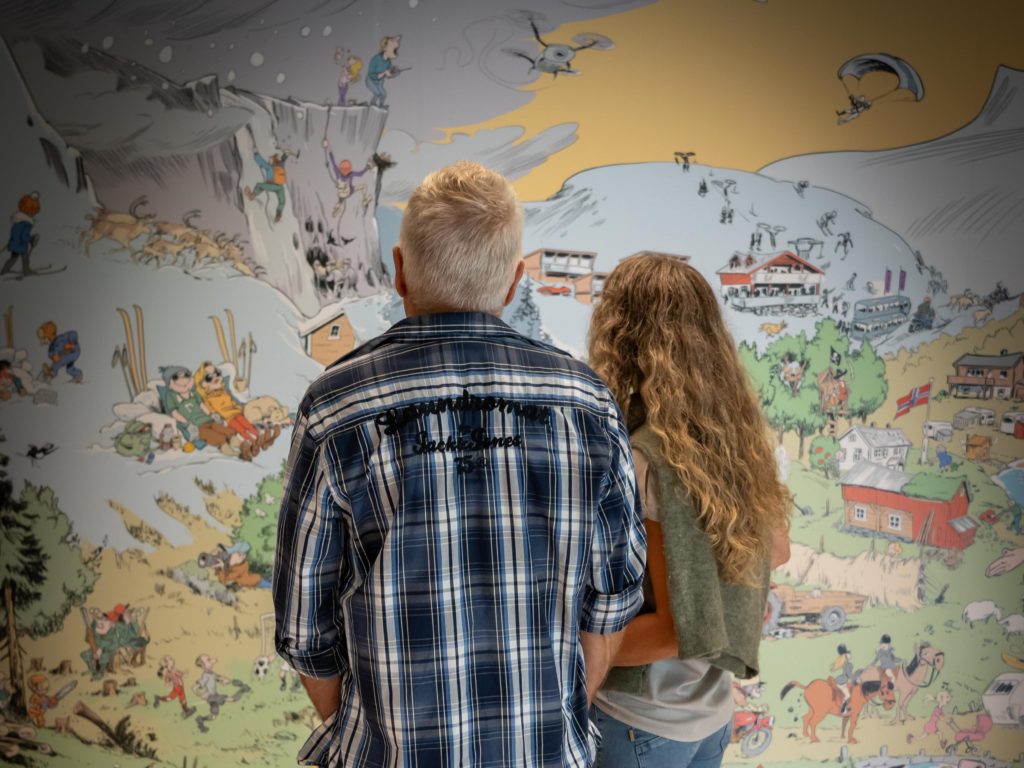
What should you think about when hiking in nature?
It is not the case that the protection regulations of the national parks cover everything you need to deal with. There are several things that may be regulated by other laws, regulations and recommendations that you should consider:
- Bonfires
- Collecting trees and branches
- Disturbance of wildlife
- Dogs
- Bicycles
- Tenting
- Drones
- Cultural monuments
- Motorized traffic
- Mushrooms, berries and plants
You can find more information about what applies to outdoor activities at the Norwegian Environment Agency. You will also often come across landscape protection areas and nature reserves, which can have both stricter and more lenient regulations than national parks. Read more about what applies to the various protected areas in Norway.
Where do you dispose of your trash or “belongings”?
A good rule of thumb is that everything you take with you into nature, you should also take home with you. Nature takes a long time to break down all garbage, even food waste and other organic material. You can find good tips on what to do at https://norskfriluftsliv.no/hva-er-allemannsretten/hva-er-sporlos-ferdsel (in Norwegian).
What does it mean that cultural heritage is protected?
The national parks contain both visible and invisible cultural monuments and cultural landscapes, which are protected from destruction. This applies to automatically protected cultural monuments in accordance with the Cultural Monuments Act (which are cultural monuments older than 1537 and Sami cultural monuments older than 100 years). In addition, more recent cultural monuments that refer to the historical use of the protected area may be protected. Please be considerate and do not move or take loose cultural monuments with you, such as cairns or millstones, as this can also affect the landscape and others’ hiking experience. Read more at Riksantikvaren (in Norwegian).
Four simple rules about reindeer and outdoor life
You may be passing reindeer herding districts, and it is important that you know how to behave in these areas:
- Be considerate in areas where reindeer calve. If you see newborn calves, move away quickly
- Dogs must be kept on a leash in the reindeer grazing areas
- When you meet reindeer on a walk, take a break at a good distance while the reindeer passes and grazes on
- Have a good dialogue with the local reindeer herding district when preparing and organizing events for outdoor activities
Travel by public transport and reduce your carbon footprint
Summary
“Leave only footprints, take only pictures and memories with you”
Visitor centers and national parks in the North
National park visitor centers are also good sources of information for the parks in Northern Norway. In addition, they are also great experience centers for the national parks in Norway in themselves, and fulfill a number of important functions to preserve the parks and the nature around them.
Nordland National Park Centre
The center is the region’s largest and is located at the Storjord junction in Saltdal, at the foot of Saltfjellet / Svartisen National Park and Junkerdalen National Park. Lars Monsen has his own mountain farm nearby. Nordland National Park Center is located right next to the Junkerdalsura nature reserve with its rare plants, and at the junction of Silvervägen across to Sweden’s coastal and mountain world. It is also a visitor center for Rago, Láhko and Sjunkhatten national parks, and has an authentic Sami settlement and a tourist association cabin. There is also camping, cabin accommodation, a roadside inn, a kiosk and fuel / electric charging; read more at visitsaltdal.no.
Nordland National Park Center contains two main parts; Nordland National Park Visitor Center and Adde Zetterquist Art Gallery, as well as several affiliated businesses such as several national park managers, the Norwegian Nature Inspectorate (SNO), the State Forest Mountain Service (Statskog), Sami exhibitions, crafts and a museum shop.
The Nordland National Park Visitor Center contains, among other things, the exhibition IRREVOCABLE. There you will gain insight into the area’s unique nature, wildlife and cultural history, with information, maps and tips for activities for anyone who wants to experience nature at its best. Nordland National Park Center focuses on promoting sustainable tourism and nature conservation. Read more about them at nordlandsnaturen.no.
Sjunkhatten National Park
Visit ‘The children’s national park’ with saw-tooth peaks, deep valleys and rounded mountains. The park is located close to and accessible from Bodømarka, Valnesfjord and Kjerringøy. The accessibility makes Sjunkhatten an attractive area for outdoor activities, especially for children and young people. It is also a great ski destination, the area is suitable for both cross-country skiing and mountain skiing, especially in Bodømarka and Valnesfjord. Read more about Sjunkhatten National Park.
Junkerdal National Park
Junkerdal National Park encompasses a large unspoilt mountain area that nevertheless bears witness to considerable human activity. Read more about Junkerdal National Park.
Láhko National Park
Are you one of those who think that ’a stone is just stone’? In Láhko, you will find that this is not the case. Water and weather work on the soft limestone, changing its strange shapes from year to year. Read more about Láhko National Park.
Saltfjellet-Svartisen National Park
Saltfjellet-Svartisen National Park ranges from fjords and saw-tooth mountains in the west to moorlands and broad valleys in the east. Read more about Saltfjellet-Svartisen National Park.
Rago National Park
In Rago National Park you can enjoy the wilderness, hike through wild, verdant valleys with roaring waterfalls, or luxuriate in the silence of this magnificent alpine setting. Read moe about Rago National Park.
Visitor Centre Øvre Pasvik National Park
At the visitor center you will find exhibitions that present the special nature, culture and history of Pasvikdalen, you will learn about the primeval forest in the national park and the most characteristic bird and animal species that live here. Pasvikdalen borders Finland to the west and Russia to the east, and has Norway’s densest brown bear population. Brown bears have therefore been given a central place in the exhibitions, and with interactive solutions the center offers exciting and educational experiences for visitors. The center is surrounded by a botanical garden, and in the surrounding area there are various nature trails with different tasks, and you will also find accommodation here. Read more about the center at pasvik.no/.
Øvre Pasvik National Park
In Øvre Pasvik National Park you will find the largest virgin pine forest in Norway with many exclusive taiga forest bird species. Read more about Øvre Pasvik National Park.
Varangerhalvøy Nasjonal Park
Far north-east in Norway, Varangerhalvøya offers an ancient landscape that is distinctive of the Arctic mainland and the very best of Norway’s Low Arctic scenery. read more about Varangerhalvøya National Park.
Seiland National Park
In Seiland National Park you will find steep mountainsides plunging down to the sea and Europe’s northernmost glaciers. Read more about Seiland nasjonalpark.
Visitor Center Stabbursdalen National Park
Stabbursnes Naturhus og Museum is the authorised visitor centre for Stabbursdalen National Park. Here you can learn about the natural environment and culture of Finnmark county. Read more about stabbursnes.no.
Stabbursdalen National Park
In Stabbursdalen National Park you will find barren mountains, deep valleys, glassy mountain lakes and the world’s northernmost pine forest. Read more about Stabbursdalen Nasjonal Park.
Anárjohka National Park
Anárjohka National Park offers everything you would expect from inner Finnmark, vast expanses, large bogs and birch and pine forests. There are no open cabins or huts here and no marked trails. The national park offers everything you would expect from inner Finnmark, vast expanses, large bogs and birch and pine forests. There are no open cabins or huts here and no marked trails. Those who visit the area are often hikers who find their own way and provide for their night’s rest. The landscape is characterized by several hundred years of Sami domesticated reindeer herding, which is still actively practiced. The area is a living cultural landscape and is used as winter pasture during the period October – May. Read more about Anárjohka National Park.
Visitor Centre Reisa national park
At Storslett, you will find the visitor centre for Reisa National Park, which provides leaflets, paper maps, digital mapping services, information and literature about Reisa National Park.
Reisa National Park
Reisadalen valley extends from the Arctic Ocean coastline all the way to the Finnmarksvidda plateau in a varied, dramatic landscape. Read more about Reisa National Park.
Reindeer herding and Sami culture heritage (Finnmark)
Visitor Centre Carnivore – Bardu
The Visitor Centre Carnivore at Bardu is part of the Polar Park. Here you can learn more about Norway’s carnivores or take on a challenge in the activity park. Read more about Visitor Centre Carnivore – Bardu.
Ånderdalen National Park
Ånderdalen National Park presents the variation of northern Norway’s magnificent coastal landscape. Read more about Ånderdalen National Park.
Øvre Dividal National Park
Øvre Dividal National Park has a varied landscape with pine and birch forests, alpine mountains, lakes and marshes. Read more about Øvre Dividalen National park.
Rohkunborri National Park
Rohkunborri National Park is located in one of Troms county’s most remote areas. Experience silence and the canyon in Sørdalen valley. Read more about Rohkunborri National Park.
Hikes in the most wild Mountains (Senja, Indre Troms og Ofoten)
Visitor Centre Lofotodden National Park
The visitor centre is centrally located in Reine in Moskenes. Here you will find a great exhibition that takes you on a journey into Lofotodden National Park. A short walk from the visitor centre you will find the fjord route that takes you into Reinefjorden and to Vinstad, which is one of the gateways to the national park. Read more about Visitor Centre Lofotodden National Park.
Lofotodden National Park
Lofotodden National Park features a unique landscape with rows of high, slender peaks surrounded by the open ocean, a rare natural phenomenon globally. Read more about Lofotodden National Park.
Møysalen National Park
Møysalen National Park is set in a unique coastal landscape that extends from lush fjordside hillsides and valleys to rocky alpine mountains. Read more about Møysalen National Park.
Where the Mountains rice right for the Sea (Lofoten og Vesterålen)
National Parks in Helgeland
Saltfjellet-Svartisen National Park
Previously mentioned, Saltfjellet-Svartisen National Park with adjacent protected areas is the most intact and complex natural area in the entire country, and stretches across the Arctic Circle from Helgeland to Salten. Read more about Saltfjellet-Svartisen National Park (takes you to the section about the park further up).
Lomsdal-Visten National Park
Narrow fjords and wide valleys, large and small watercourses, and alpine plateaus that extend into peaks and mountain ranges greet you in Lomsdal-Visten/Njaarke. Read more about Lomsdal-Visten National Park.
Børgefjell National Park
Børgefjell is where to come for those special up-close experiences with nature and an untouched landscape without being disturbed by others. Read more about Børgefjell National Park.
How to get into the wild (Helgeland)
National Parks in Svalbard
In the national parks in Svalbard we find large, continuous and untouched areas on land and in the sea. In this Arctic nature you will find large glaciers, high mountains, beautiful fjords and moon-like landscapes. Today we have seven national parks and a further 22 protected areas in Svalbard. In total, these cover about 65 percent of the archipelago’s land area. All the national parks in Svalbard are located on the largest island, Spitsbergen. The national parks represent the unique nature of Svalbard, and here we find large, continuous and untouched areas on land and in the sea. Svalbard can be visited in both summer and winter, and it offers very different experiences. Read more about Svalbard’s seven national parks.
